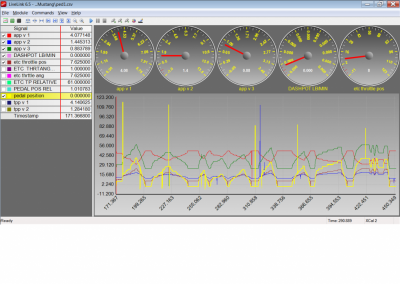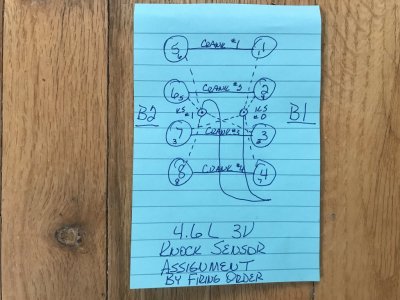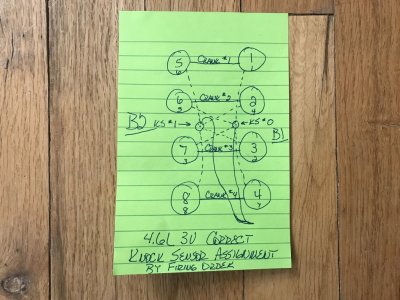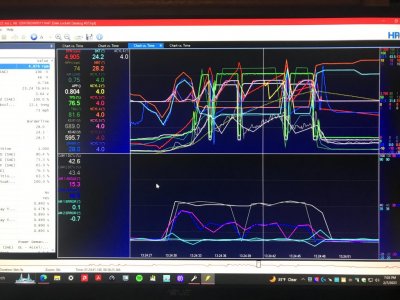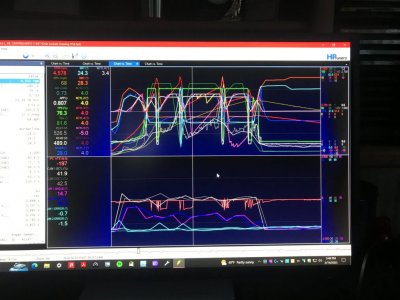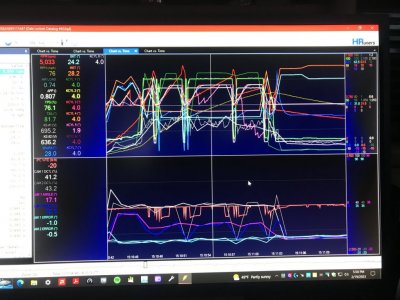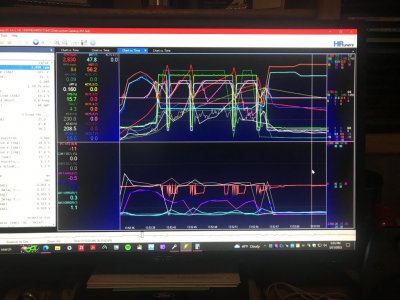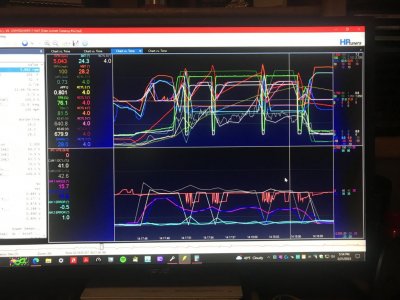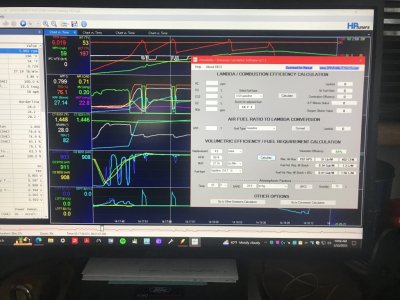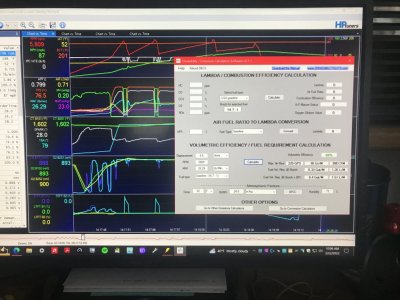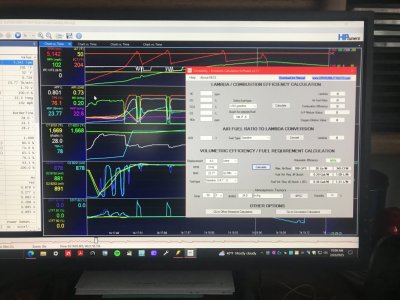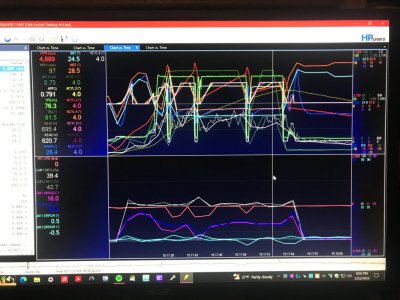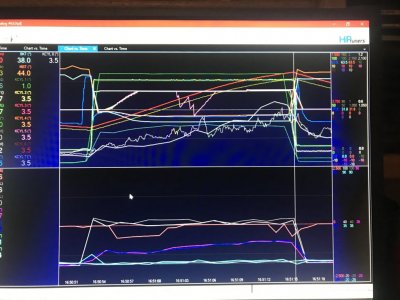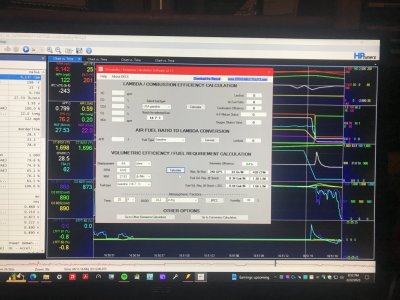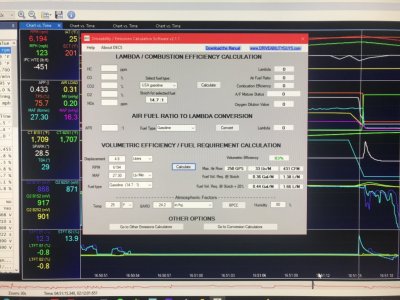You should really consider getting into the tuning business...

Pg 12, post #229 of this thread I answered this question back then..........in addition to now w\ HPTuners ID'ing the HPTuners MPVI2, 2+ or 3 interfaces to the individual who purchased it (along w\ purchaser having to take & pass an EPA-mandated emissions test so HPTuners will then unlock\allow access to all emissions sections in the PCM calibrations thru their interfaces & assigning the interface w\ a special unique ID code that attaches to every tune file you flash in PCM for tuner ID purposes for the EPA) to comply to EPA rules to be able to keep selling their products (like SCT had to go thru earlier to remain in business) since their products are specifically targeting use w\ tuning factory OEM PCM's.......just reinforces my decision to not go there.
But......
if someone buys their own tuning setup to do their own tuning on their factory OEM PCM themselves thus taking all this responsibility onto themselves......then under this scenario I would gladly help out & share all of what I've learned\know now to help a fellow out tuning their 4.6L NA V8......themselves.
I'll also suggest considering purchasing access to a base tuning tutorial for these 05-10 Ford Mod Motor engines using the SO PCM (or even Coyotes using Copperhead & up PCMs for 11-present) to have on hand to fall back on as well.........there's just too much information to absorb in 1 or 2 readings\sessions.
Now I'll also say this......might offend some but it needs to be said........if a person doesn't have a good enough understanding of exactly how a 4-stroke IC engine works & all associated components in it, along w\ a good enough understanding of computer programming & how PCM calibration code lines are processed to be able to make sense of the settings you see & how the PCM will use it all, then tuning will be a BIG STRUGGLE w\ a LOT of costly mistakes to go thru before figuring all this out thus is going to take a LOT of learning time to get up to speed enough then try to START thinking about tuning......if 1 is NOT WILLING to go thru all this to learn enough to start tuning their own vehicle,
then these are the folks that need to take their vehicles to the folks who are in the tuning business professionally to get their vehicles tuned.......period.
Just so all know..........
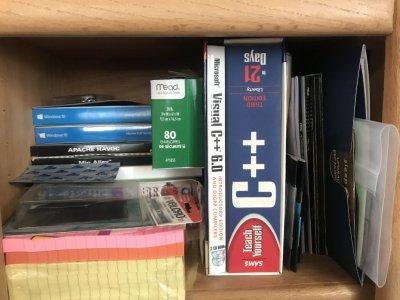
This is a Microsoft SAMS series self-learn Visual Basic C++ computer programming course that I bought some 18 yrs ago to self-learn all this myself (I also have a Corel Visual Basic C computer programming course that predates this 1 & have been building my own computers since 2001...) w\ the intention of writing a plunger lift program that would address some of the weaknesses I saw in other PL softwares to improve operations......until I learned that, since I was employed by ConocoPhillips at that time & developing this software using their properties\equipment that I then couldn't patent my own intellectual work & it would all belong to COPC, so I stopped & put all this aside.
So, I come from a place of actual knowledge of what I'm saying here........not just talking points. It's this background that I have is what helps me to see thru a LOT of these mistakes my prior tuner & to some degree others as well have made in tuning when you make tune setting changes that I know are potentially causing code line contentions (breaking code line argument, logic & process) or don't make proper corrections to map settings in the PCM's calibration that will set off unwanted actions that will cause operational issues......just from me studying the OEM tune files & asking questions from sources that I know have this type of background as I know the Ford engineers are inputting settings all based off the PCM calibration's actual code line process mapping & have already solved most of these issues, also knowing that some of this coding is embedded (such as EVAP operations for starters) that HPTuners\SCT, etc doesn't provide\couldn't provide access to except to either enable\disable it, but is coded to work in conjunction w\ the rest......just have to figure it out to then
know which settings changes to make\how far to go w\ them to get what you want to happen w\o breaking the rest.......along w\ enough mathematics\sciences background to understand the equations used to then figure out what causes other issues when these equations (such as the tune's ETC TB PTA\EA mapping to rep the actual TB's internal PTA\EA being used for starters as well) are also not followed\used properly. This is VERY HARD to understand\comprehend well w\o a basic computer programming\mathematics\sciences background to help make sense of it all because the majority of what a tuner needs to know is not visually visible thru a tune file......it's what is underneath in the background of any tune file's settings......the operational PCM calibration code line logic process mapping....is what needs to be known.
Very, very few folks actually know\teach all this concerning factory OEM PCM calibrations, regardless of origin for very good reasoning (intellectual property thus copyright laws apply).........even 25 yr+ professional tuners.......w\ PCMs as old as these Spanish Oaks PCMs are.......simply due to the "good enough" mentality that persists in this industry to this day thus some customers are still paying the price for what is essentially tuning complacency......therefore they either don't learn what they needed to learn\should have already learned or don't know what they needed to know\should already know so thus will always come up short......at the time(s) when they don't\can't afford to have that happen.
Why so many like to replace factory OEM PCMs w\ standalone PCMs cause you don't have to contend w\ all the emissions coding......that they didn't want to take the time\effort to learn to then be able to tune around it all to get the HP\TQ they want while at the same time retaining all the emissions functions......even though in reality, the emissions functions are a direct correlation into the actual IC engine's HP\TQ output as BOTH are a
direct result of engine efficiency.....efficiency goes up, so does HP\TQ output w\ emissions output improving (decreases) at the same time & when efficiency goes down, so does HP\TQ output w\ emissions output suffering (increases) also at the same time. The
only scenario that deviates from this fact is when the engine's max VE output exceeds the cats max exhaust poundage treating capacity......also a known fact in the scientific automotive world for the last 35+ yrs........but not so much in the automotive enthusiast world......why this is so, is beyond me but I have a good hunch that capitalism has a LOT to do w\ it......not a lack of knowledge.
Now you know the other reason why I record\track the Mode 6 Cat CE Ratio results from the PCM (I don't own or have access to a 5-gas exhaust analyzer that most professional tuners will need going forward to stay in business but Ford has already provided 1 for all us DIY'ers if we just stop defeating it & use it)......whatever changes I make in the tune file that ends up showing an improvement in Cat CE Ratio is a dead ringer to also have improved engine HP\TQ output.......not a question of IF, but only HOW MUCH...... Don't need a dyno to know the IF.......only the HOW MUCH.
Example: the Cat CE Ratio results from my last tune revision & DC\WOT run that I've called done was B1 @ .059.....idle LTFT @ -2.3%, B2 @ .086.....idle LTFT @ 0.8% w\ CMBT @ 1,487*F avg....the 1st sets of numbers all show the overall engine combustion efficiency thru the cats operations---cats can only treat what the engine sends into them thru the exhaust, the more efficient the engine combustion is the less HC, CO & NOx they have to scrub out per lb of exhaust gas emitted thus the
lower the Cat CE Ratio results will go, perfect 100% result is .000 CE Ratio....this isn't really a measure of the actual cats efficiency, it's actually a measure of the ENGINE'S EFFICIENCY thru the cats ability to use up all of the free O2%
the PCM calc'd to send into the cats to treat the amount of HC, CO & NOx in exhaust the PCM also knows was sent into them......the closer the B1\B2 LTFT avg's get to 0% is more proof of increasing combustion efficiency getting closer to true stoichiometry across the entire engine's operational envelope---along w\ the avg operational exhaust temps.....the higher the avg exhaust temps get is proof that more total energy was released thru the engine combustion process thus more available energy to perform more work thus more usable\measurable engine HP\TQ output........it's that simple. If exhaust temps are increasing, the amount of usable energy has also increased thus the amount of TQ thus HP has also increased......if exhaust temps are decreasing, so is the amount of usable energy thus the amount of TQ thus HP has decreased as well. It's up to the tuner to make sure that this exhaust temp increase is coming direct from the engine cyls & NOT from shoddy tuning that has most of this exhaust temp being derived thru the cats having to burn off all the excess HC, CO & NOx from poor cyl combustion efficiency (why most cats are cooked from overheating......so don't use no more OL fueling than necessary to get the HP\TQ out of the engine safely.....it's the EXCESS UNECESSARY fuel used that is causing this to happen, usually due to folks who don't install an efficient enough engine COOLING SYSTEM to help remove enough of this extra heat generated thru the cyl heads thus having to use excess fuel to compensate for it......not good).
Cat CE Ratio results that are rising is a dead indicator of this happening.......
And yes, the butt dyno can easily detect some of the effects from the IF.......
I myself know this as I have a copy in hand of the full automotive scientific catalytic converter study done after OBDII came out in 1996 (before CARB was a thing) that covered all this......up to & including what is needed for any IC engine...including FI-equipped IC engines.....to operate properly using cats & the process of properly sizing them to match\exceed the engine's max VE output under most any operational scenario so all operates properly & legally.
Take this FWIW......just putting this out there for those so interested......................


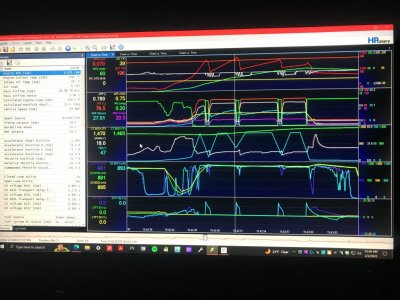
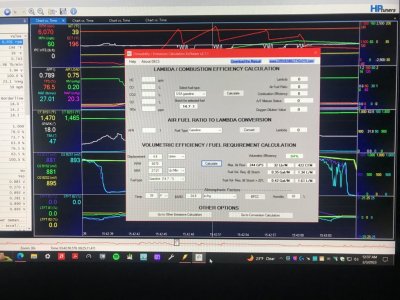
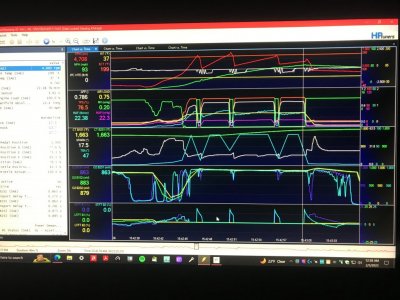
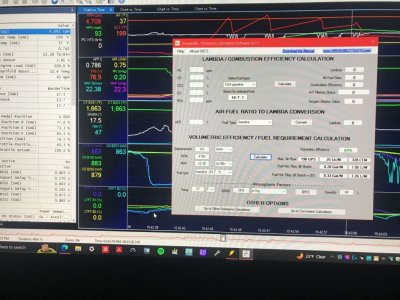

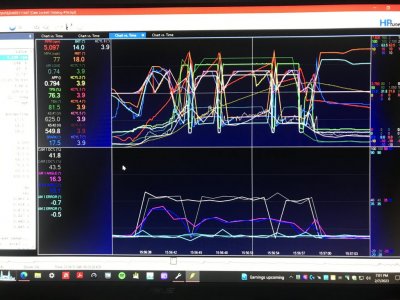
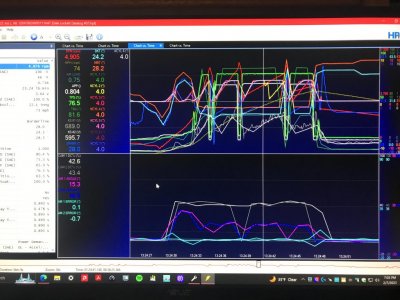

 Thank you!
Thank you!